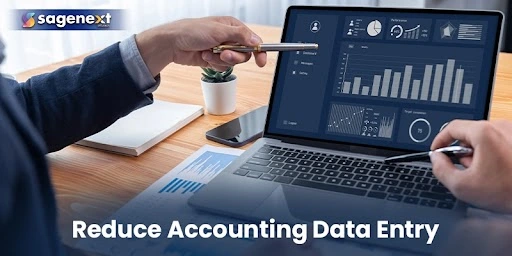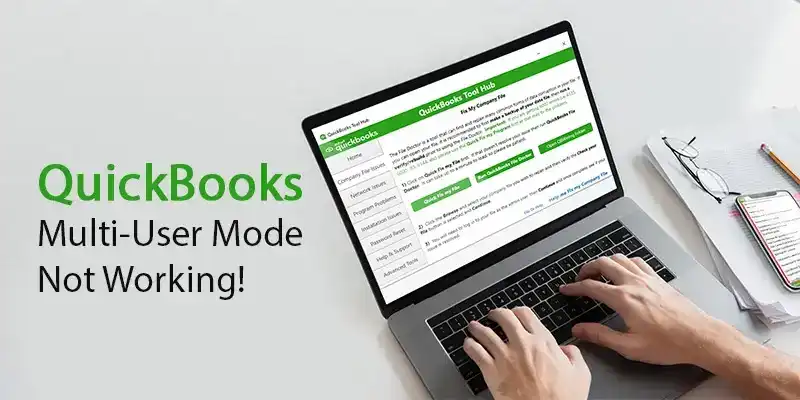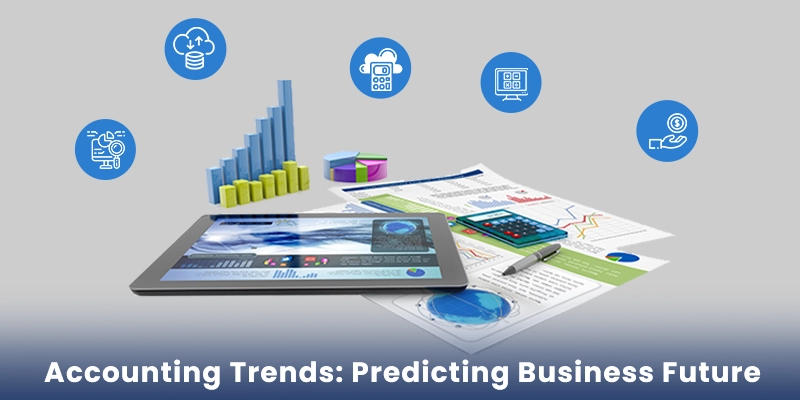
Ways to Reduce Accounting Data Entry and Start Automating
The world we live in today is dictated and powered by data. It is at the core of decision-making. It plays a vital role in enhancing the efficiency and growth of your business. All your business data, especially those related to accounting and finance, provide you with great insights into various aspects of your business. Therefore, you need to manage your data-related processes effectively. Doing so will ensure that you process your data appropriately and have a competitive edge over your counterparts in the industry.
However, managing accounting data is easier said than done. There are accounting data entry issues like dual inputs, human errors, unpopular data silos, and obsolete details that you have to deal with. That said, there are ways to reduce accounting data entry and start automating it. This post lists some top methods to reduce accounting data entry and start automating. But before that, we will understand the data entry process, its associated challenges, and the importance of automating it.
What is Accounting Data Entry
Accounting data entry is the process of recording financial transactions like receipts, invoices, payments and other relevant information in a preferred format into the accounting system or software. There are dedicated professionals called data entry clerks or operators who spend innumerable hours entering all the financial data. Accounting data entry helps in maintaining accurate and up-to-date financial records of a business or organization. It is crucial for preparing financial statements, cash outflows and inflows, and analyzing financial performance.
What are Major Accounting Data Entry Challenges
Accounting professionals and data entry clerks scan documents and input numbers day in day out. While it is possible that they input more data compared to other professions, they have their own challenges.
Some of the major challenges are:
1. Time Consumption
Data entry consumes a lot of time. A professional has to first go through stacks of receipts and ledgers to comprehend the data. Then he has to devote endless hours to enter that data into the system.
2. Error-prone Process
It is a monotonous task having a great risk of human errors. There are numerous things like missing documents, faded receipts, illegible handwriting, and typing errors that contribute to an increased risk of errors. Regardless of the reason, an error can cost your business dearly. You may lose a large business client or even face a lawsuit because of a mistake.
3. Expensive
Manual data entry costs you a lot. You are required to hire enough operators to be able to enter all the data that is being generated by your business. Besides their salaries, you also need to purchase computer systems for them to work on. This further demands a dedicated IT and networking team to ensure all your systems are up and running.
4. Sudden Surplus of Work
Data entry tasks suffer huge setbacks due to a sudden surplus of work. Annual events like tax season can be inimical to your organization if you do not incorporate automated solutions for data entry.
If you have a small team of accountants, it will be under huge pressure due to enormous work. That further increases the errors in the data entry process.
Tips to Reduce Accounting Data Entry and Start Automating
The following are the top 7 ways in which you can reduce accounting data entry through automation, without hurting the financial systems of your organization:
1. Identify Commonly Used Procedures
Closely observe the accounting process of your organization to identify areas that require modifications. Find out what decisions are taken regularly. Study how your end-of-year survey works. Look for other commonly used methods or procedures. This will help you design a roadmap for automating data entry in your most utilized accounting operations.
2. Search Accounting Automation Software
Once you are ready with your plan, you need to identify the best available automated data entry software. Automating accounting processes can help businesses reduce the time and resources required for manual data entry, increase accuracy and efficiency, and free up staff to focus on more strategic activities.
It is a very crucial step towards achieving complete automation in your accounting data entry. You must have a core accounting software application, unlike Excel. It helps you achieve complete accounting automation.
Then, look for a sophisticated data entry tool like QuickBooks data entry. It will help you update the automation automatically. With such a tool at your disposal, you can set up annual costs or invoices.
Automate Your Accounting Practice with QuickBooks Accounting Software
3. Data Migration and Alteration
Having picked an automated data entry software, you can start transferring your data. Some software facilitates data migration services too. You can inquire about all such services before you finalize a data entry software for your business. Finally, chalk out a data migration strategy that successfully identifies what data you require to move and how you are going to archive old data.
Before moving further, you must let your finance team completely adjust to your core accounting software. Allow the team some time to understand the new software’s ins and outs. Moving ahead with the further automation process may result in chaos and frustration. You can ask your service provider to help smooth the adjustment process. They have robust help libraries to help you and your team get familiar with the tool quickly.
You may also see: Tips to Select Perfect Business Accounting Software
4. Identify Further Automation Requirements
Your core accounting data entry software acts as a base over which you can build your own accounting automation suite. To accomplish that, you will need to recognize additional applications that address your major pain points.
For example, you may have addressed the recurring expense problem of your accountants with your main software. However, purchasing approval may still make your managers pull their hair. That’s when you need to identify additional automation tools that cater to such problems.
5. Integrate and Test Additional Automation Tools
Having identified all the additional tools for further automation, you need to integrate and dry run them to see how well they function. Before rolling out the tools to your entire team, allow your team leaders and managers to spend a good couple of weeks testing as many functionalities as possible.
The process is important for you to determine if the tools align with your expectations. It also becomes easier for you to roll back or repair the tools before your team adapts.
6. Relay the Information
Now that you have invested your money into various automation tools, you will need your employees to use the tools appropriately. This will ensure that these tools are assets and not liabilities and that they add value to your system.
Organize sessions to make your employees aware of the modifications and how they affect them and the entire business as a whole. Provide an overview of all the automation tools and define a proper channel to help your employees get answers to their questions.
Also, motivate people to put out their queries publicly. This will help others to quickly acclimatize to the tools and reduce the number of transactional questions.
7. Closely Monitor the System
Having rolled out all automation tools across your accounting processes, it is time for you to closely observe the performance. Keep a close eye on how your people feel about the new, automated system. Ask them if all the issues you identified initially are being addressed or not. Track the time your team is taking to complete basic as well as complex tasks.
Observe the changes in the quality of your data and the number of errors. Ideally, the quality should improve while the number of errors must decrease. Also, identify financial redundancies and inappropriate expenditures.
While you may start observing some of the benefits immediately, others may take some time. Keep a track of all the aspects and try not to jump to conclusions too early.
Why Accountants/Owners Must Automate Accounting Data Entry
Here are some potential benefits of automating accounting data entry:
1. Increased Acuracy
Automated data entry systems can reduce the risk of human error by eliminating manual data entry, which can help ensure more accurate financial records. Automated systems can also perform checks and validations to help identify errors or discrepancies.
2. Time Savings
Automating accounting data entry can save time by eliminating the need for manual data entry and reducing the time required to complete other accounting tasks. This can free up staff to focus on other important tasks, such as analyzing financial data and developing financial strategies.
3. Improved Efficiency
Automation can streamline workflows and reduce the time it takes to complete accounting tasks, improving efficiency and productivity. Automated systems can also reduce the time and effort required for data management tasks, such as data entry and validation.
4. Cost Savings
Automating accounting data entry can help businesses save on labor costs by reducing the need for staff to perform manual data entry tasks. Automated systems can also reduce the risk of errors, leading to cost savings by reducing the need for corrective action and potential legal fees.
5. Better Data Management
Automated systems can help organize and manage large amounts of financial data, making tracking and analyzing financial information easier. Automated systems can also help identify trends and patterns in economic data, which can help businesses make more informed financial decisions.
6. Improved Compliance
Automating accounting data entry can help ensure that financial records are accurate and comply with relevant laws and regulations. Automated systems can also help with audit trails and record-keeping, which can help businesses demonstrate compliance with regulatory requirements.
You may also like this: Rise of ChatGPT: Is Accounting Jobs At Risk
Conclusion
Automation not only brings technological sophistication into your system but also enhances its efficiency and productivity. Automating the routine and repetitive operations involved in accounting data entry eliminates all the pain points and optimizes your overall business process.
It also minimizes human inaccuracies such as typing errors and incorrect data entries. Not to forget the significant time it saves by speeding up your processes. You can invest that time to improve other aspects of your business and boost customer satisfaction.
If you are looking for a state-of-the-art solution that can help you get rid of all the major problems associated with manual accounting data entry, start automating it with QuickBooks data entry software. You may try hosting one with Sagenext. Their superior services ensure you start automating your accounting data entry processes smoothly.
FAQs
What is bookkeeping automation?
In order to save time and effort, bookkeepers can use automation software to streamline and computerize their bookkeeping procedures. Tasks like data entry, account reconciliation, and report generation can all be automated.
What can you automate in accounting?
Data entry, bank reconciliations, invoicing, bill payments, financial reporting, and other accounting tasks can all be automated. In addition to automatically classifying transactions and keeping tabs on costs, automation tools can also flag and fix errors.
How will automation affect accounting?
Automation is expected to impact the accounting sector significantly, helping businesses cut costs, increase accuracy and efficiency, and free up employees to focus on more strategic endeavors. But it also necessitates accountants learning new things and adjusting to new technologies.
Will automation replace accountants?
While automation is likely to change the role of accountants, it is unlikely to replace them entirely. While many routine tasks can be automated, accountants must provide strategic advice, interpret financial data, and make complex financial decisions. Additionally, automation may create new job opportunities in the accounting industry.
 written by
written byAbout Author






